
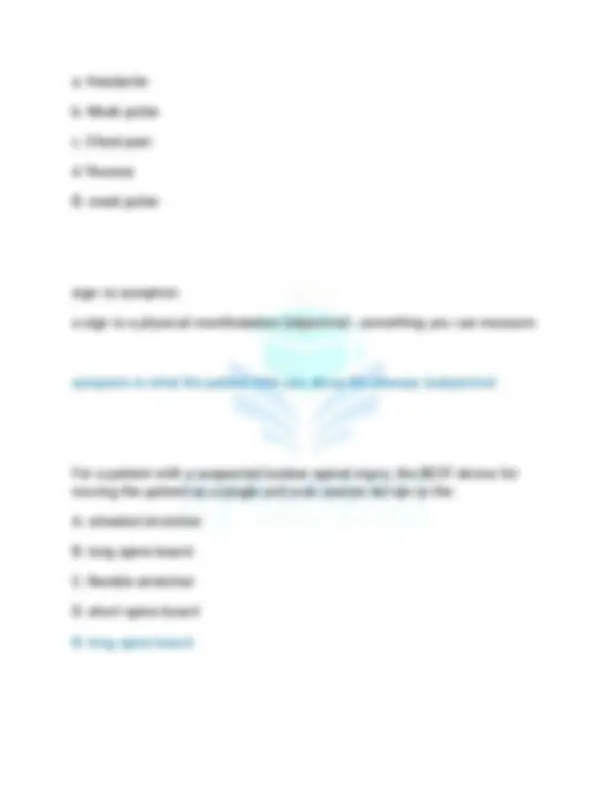
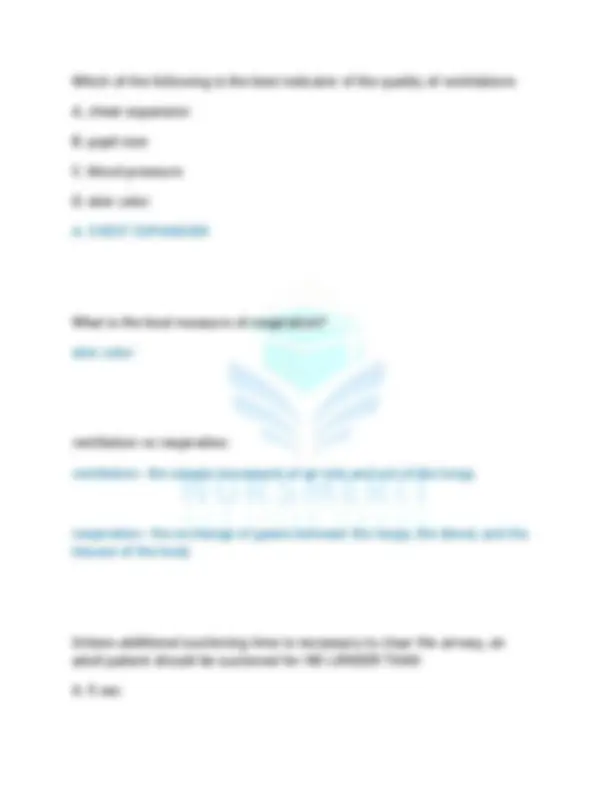
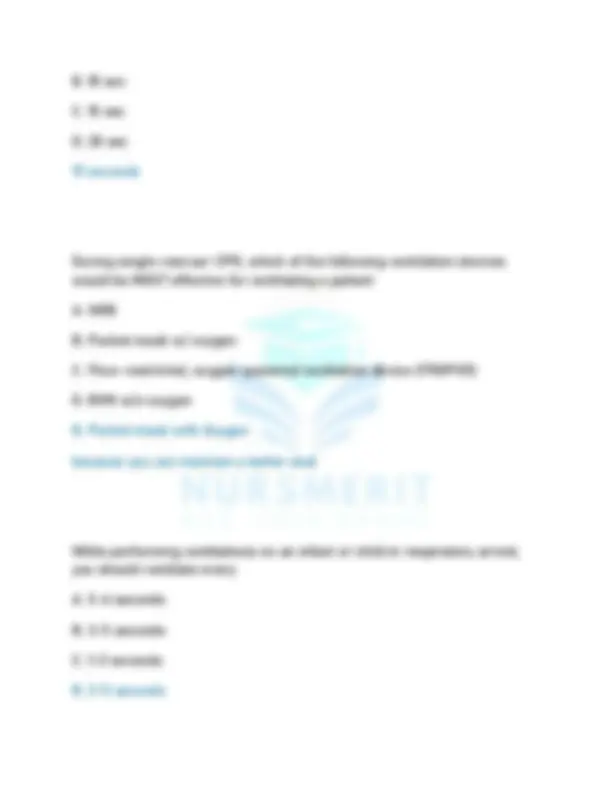
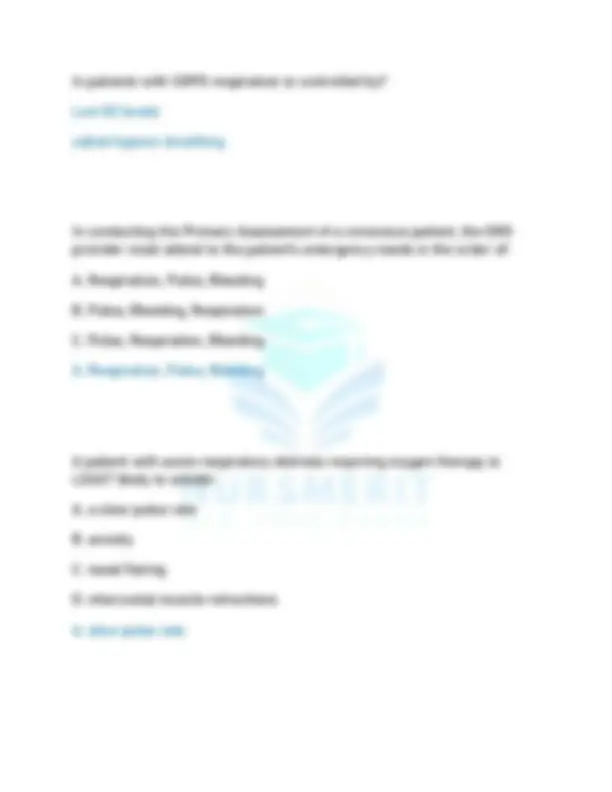
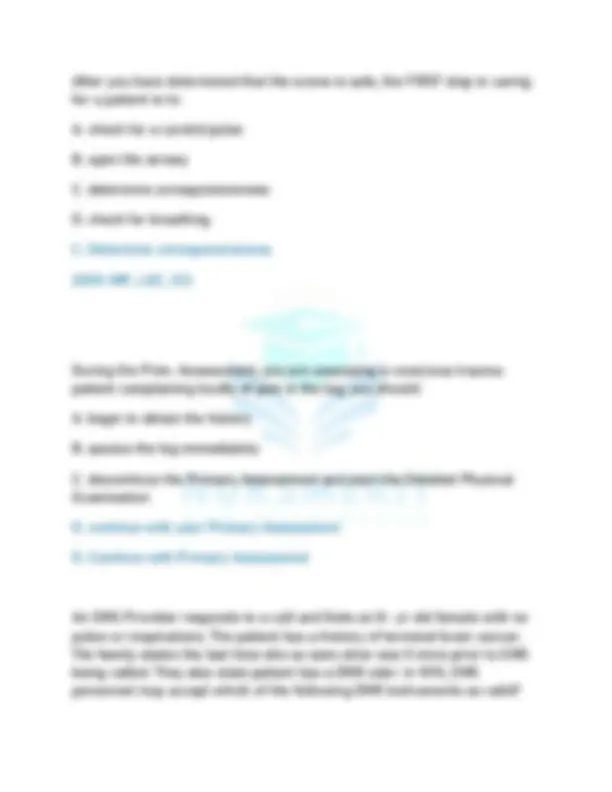

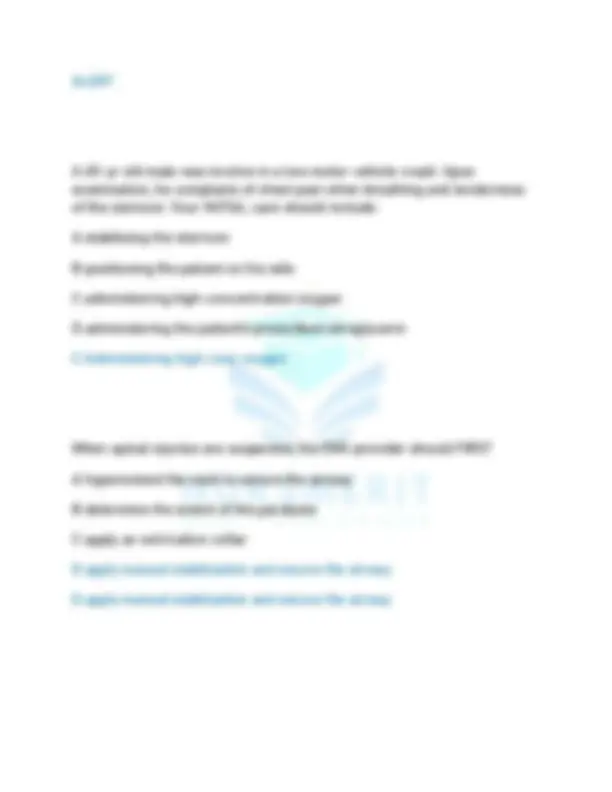
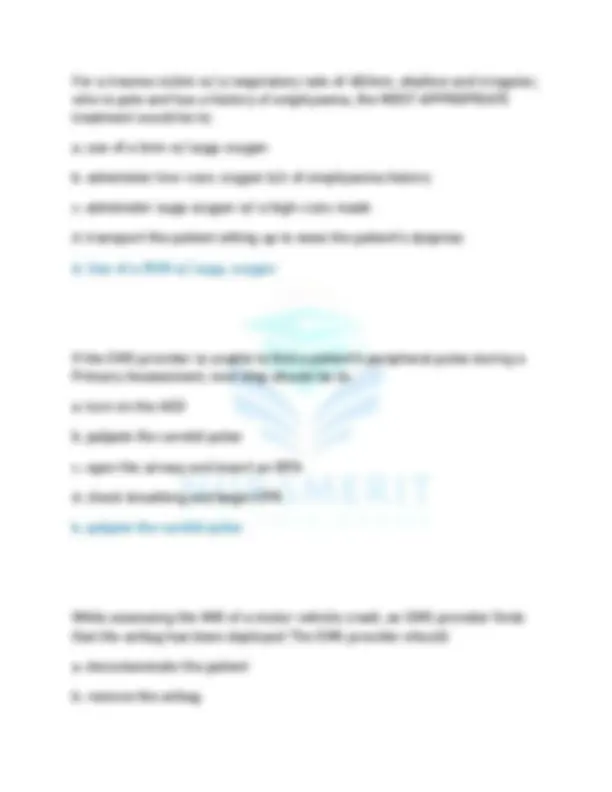
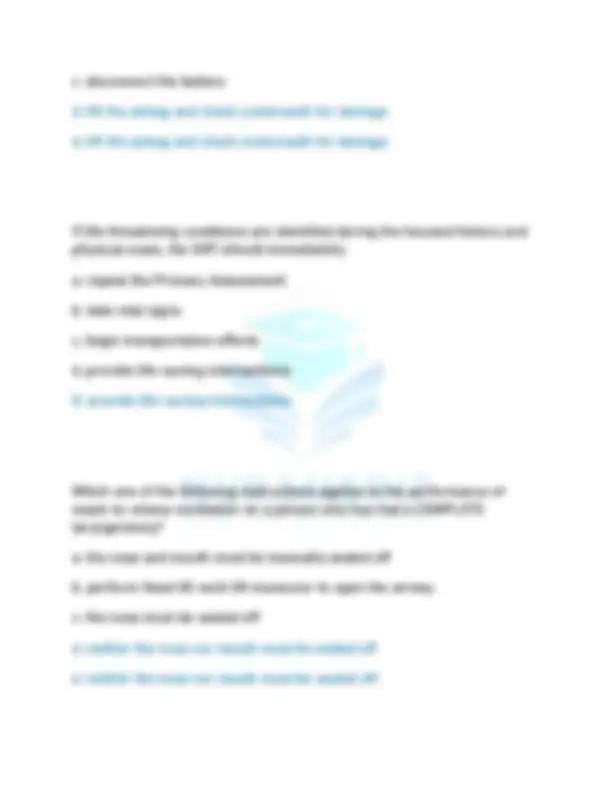
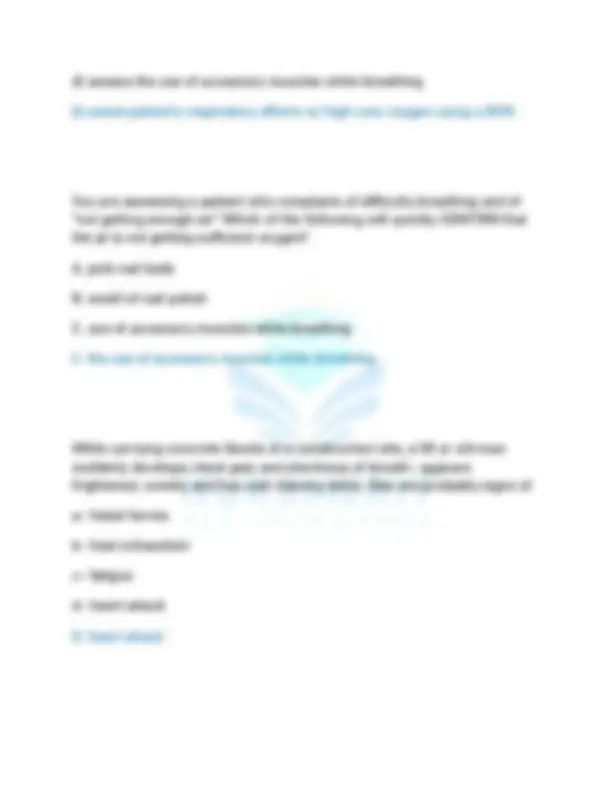
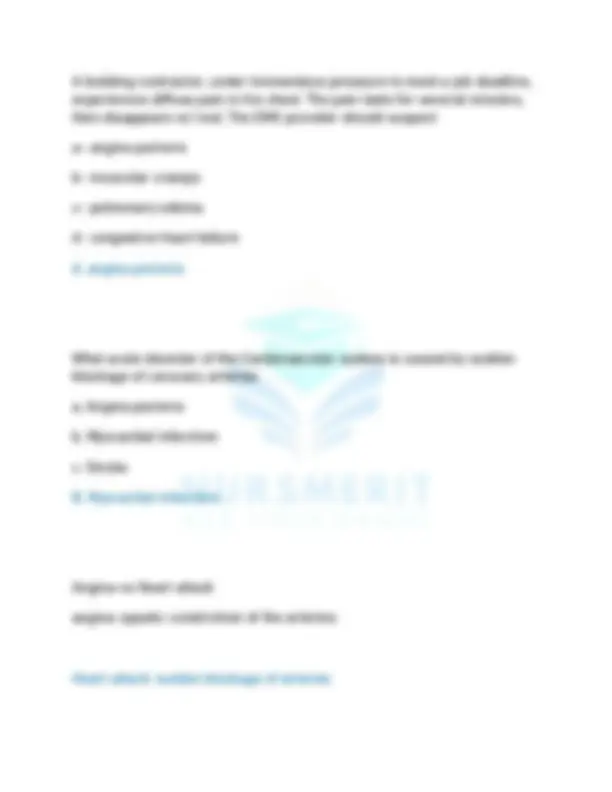



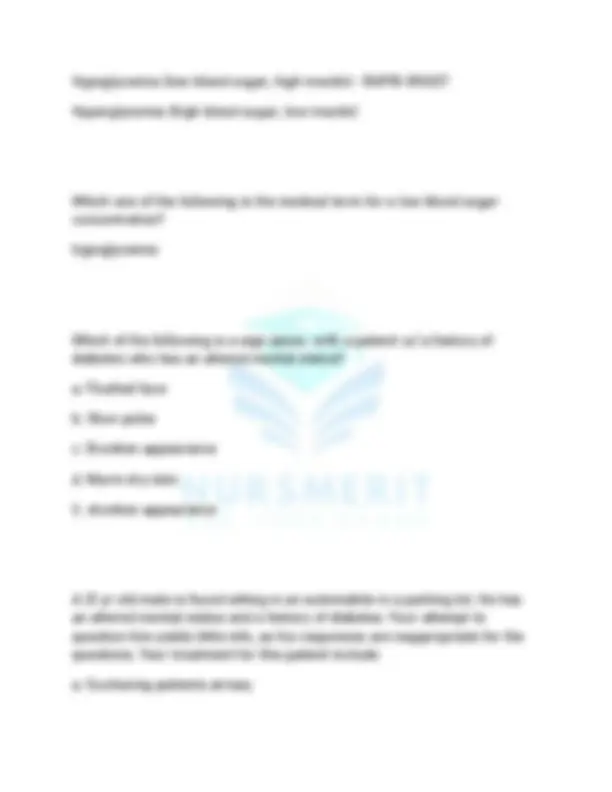
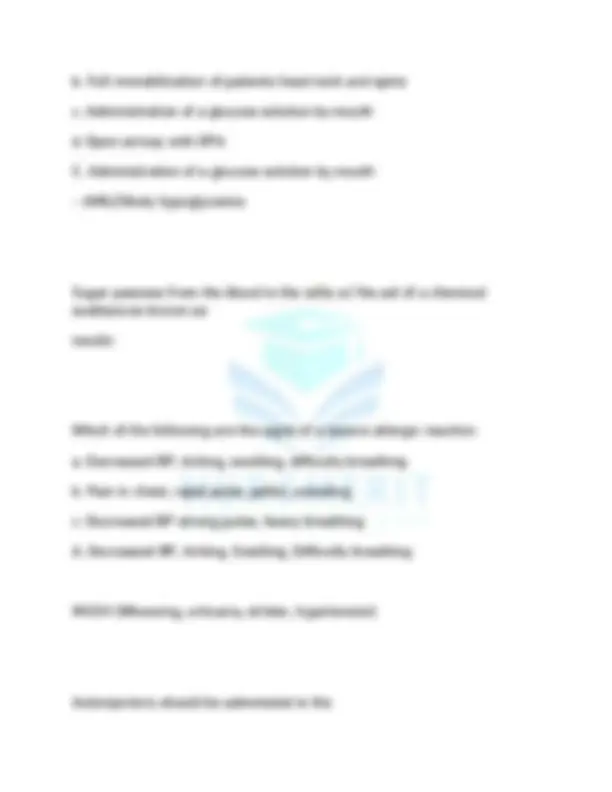
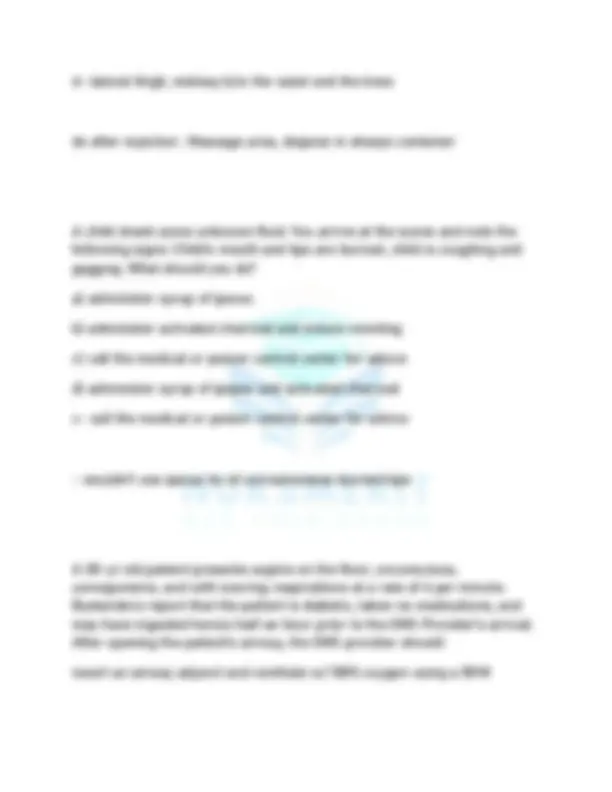
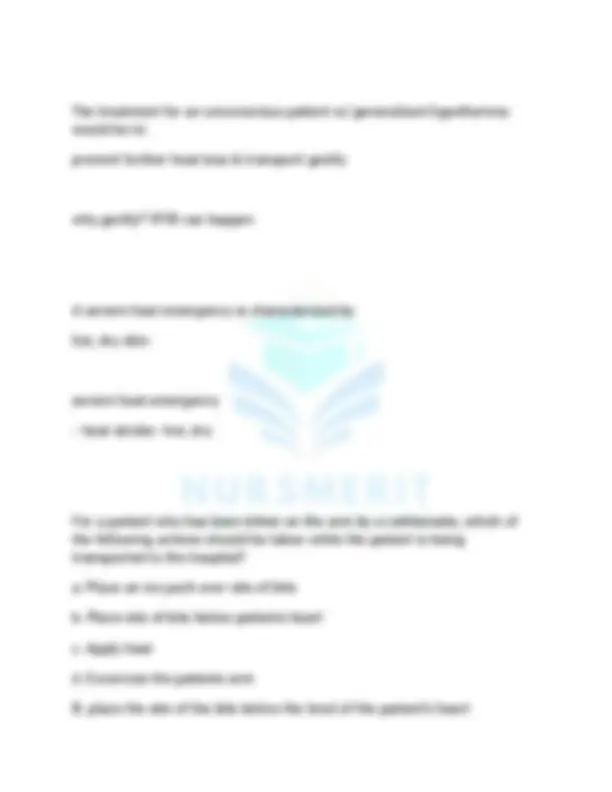
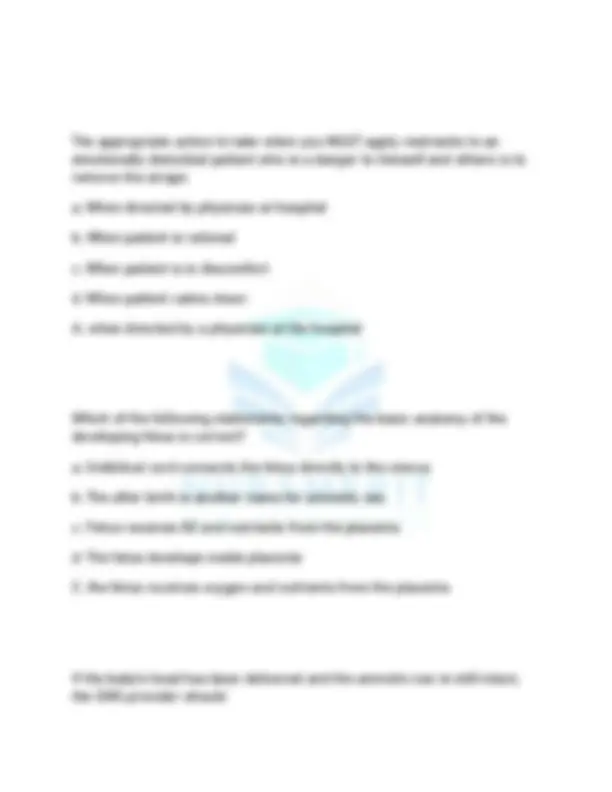
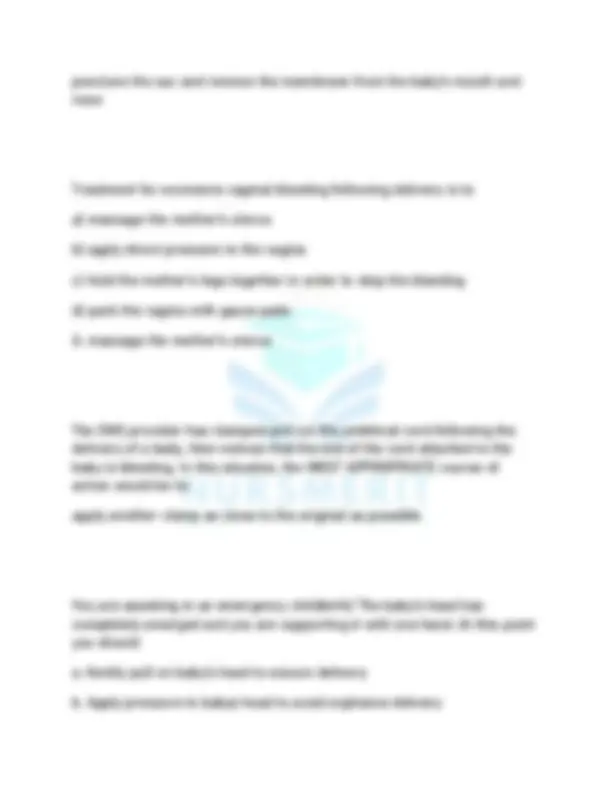
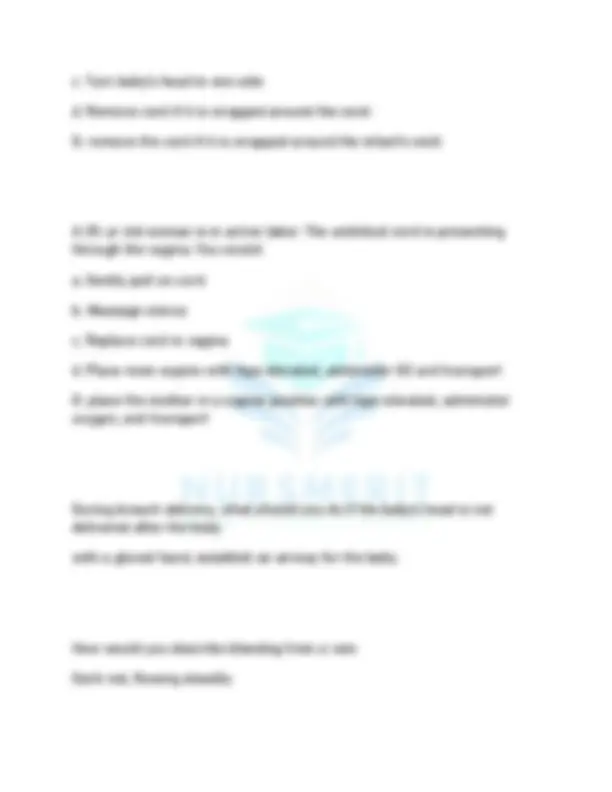
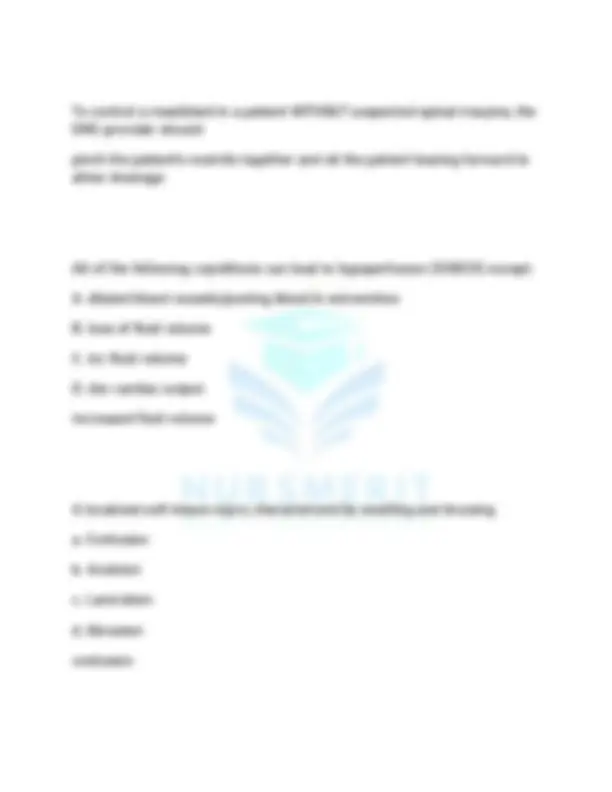
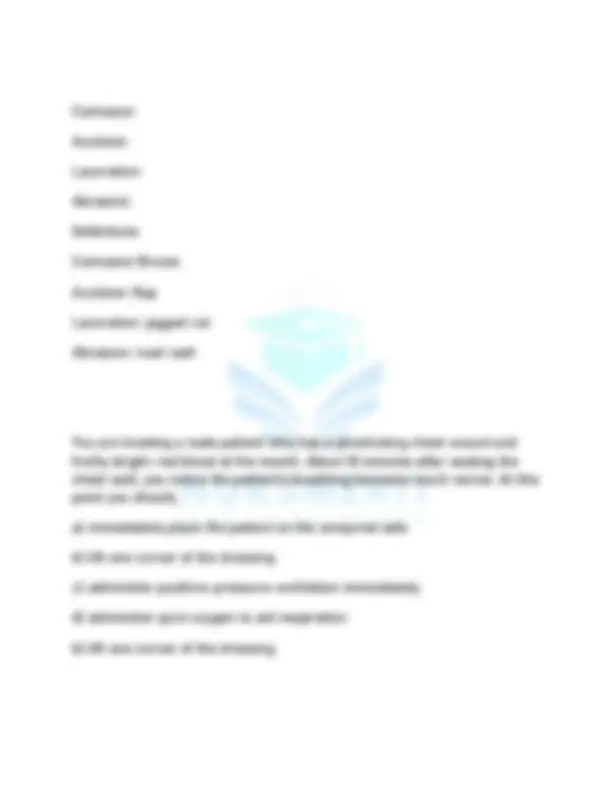


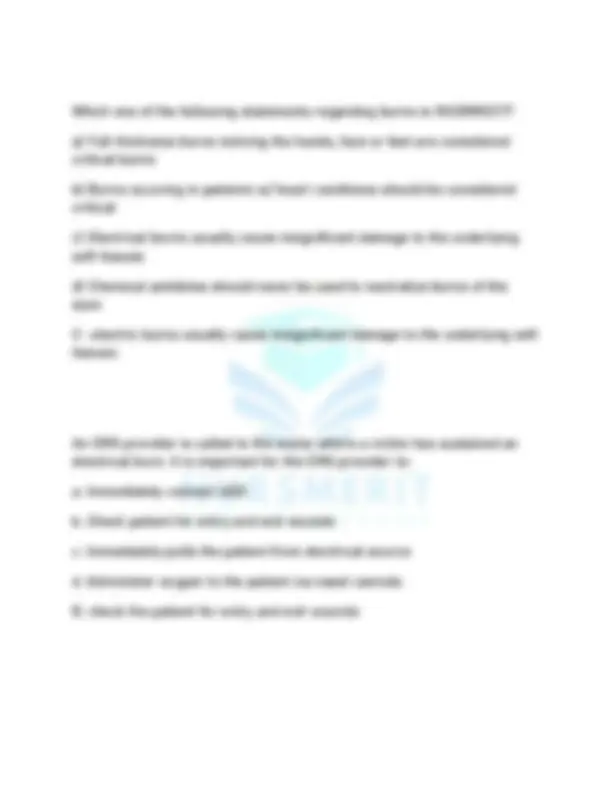
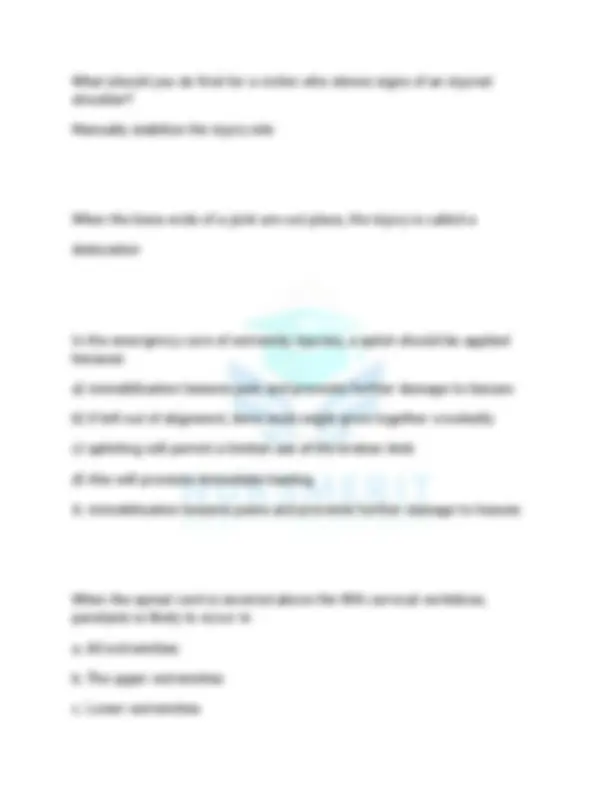
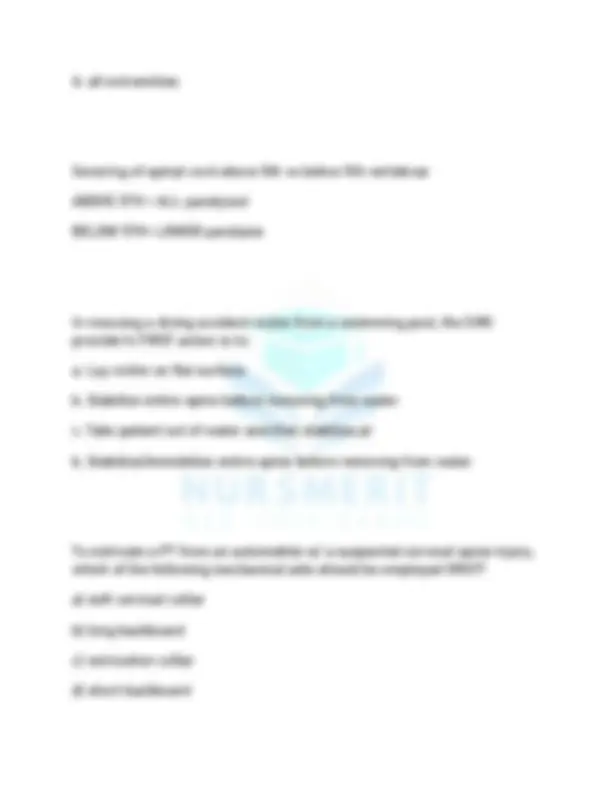
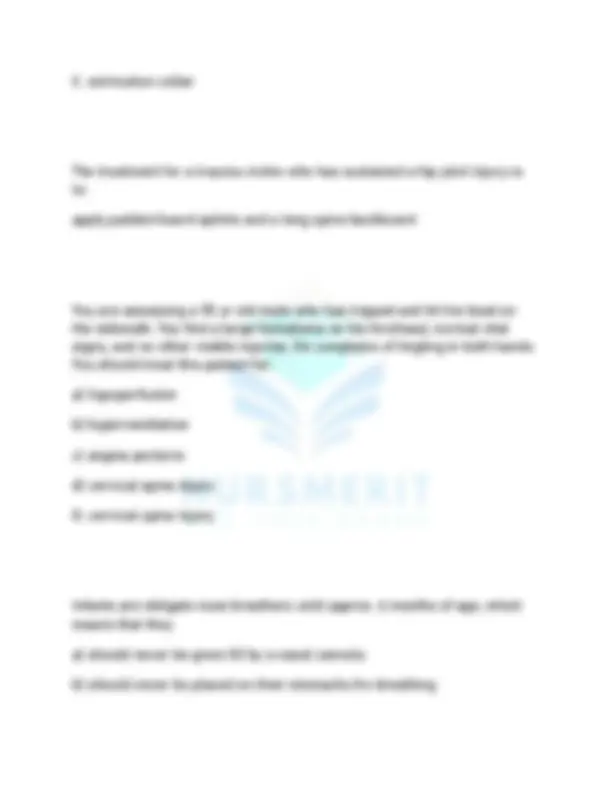
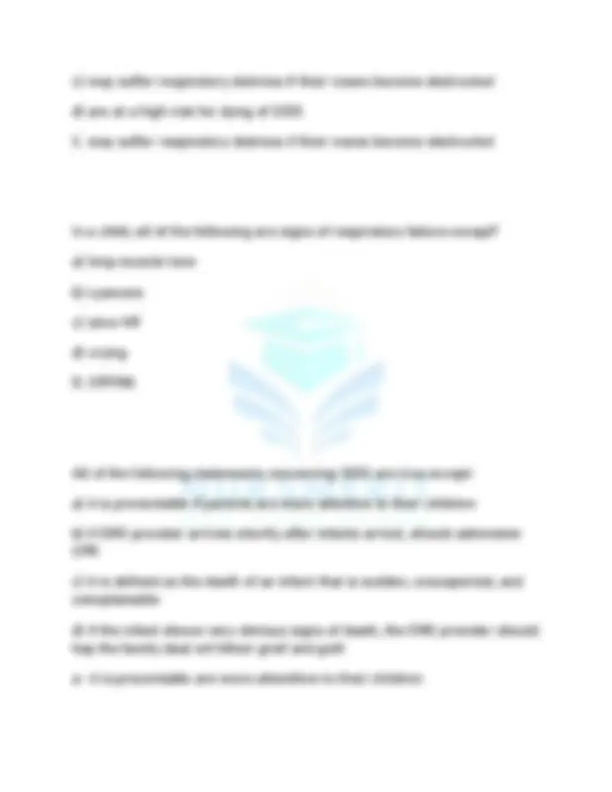
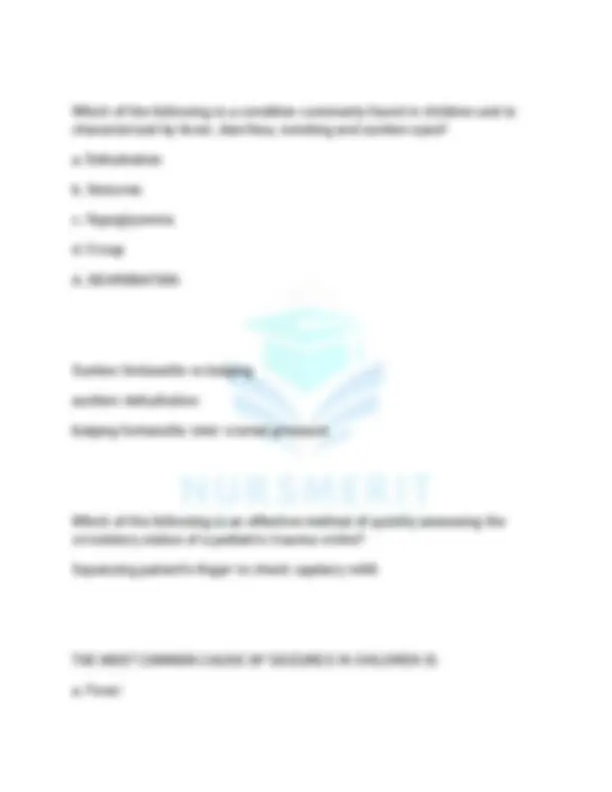
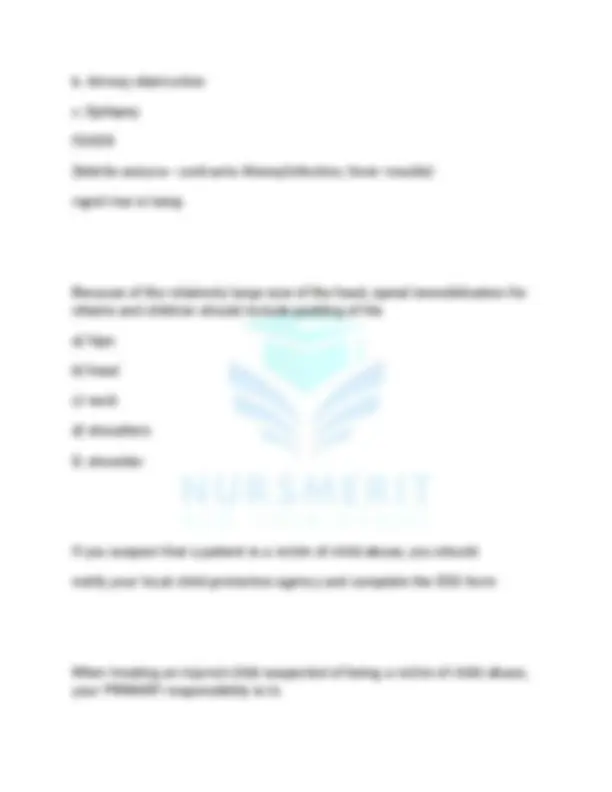
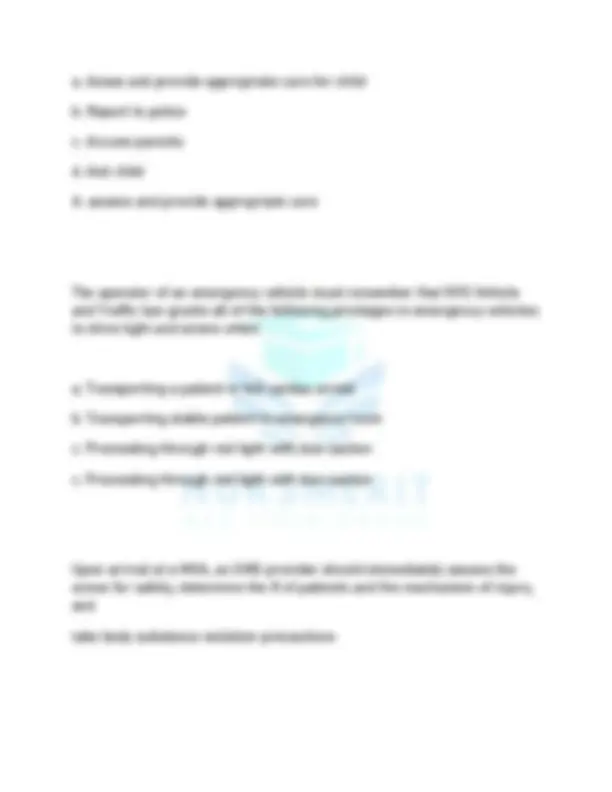
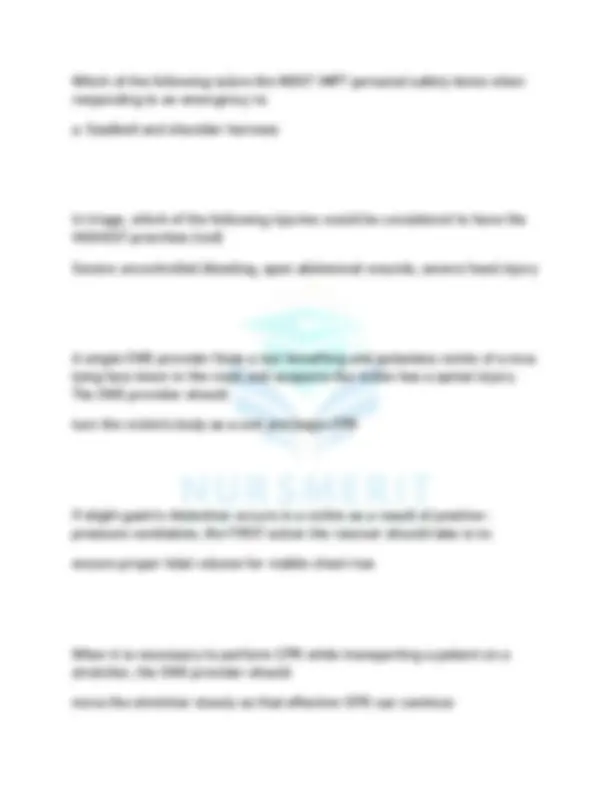
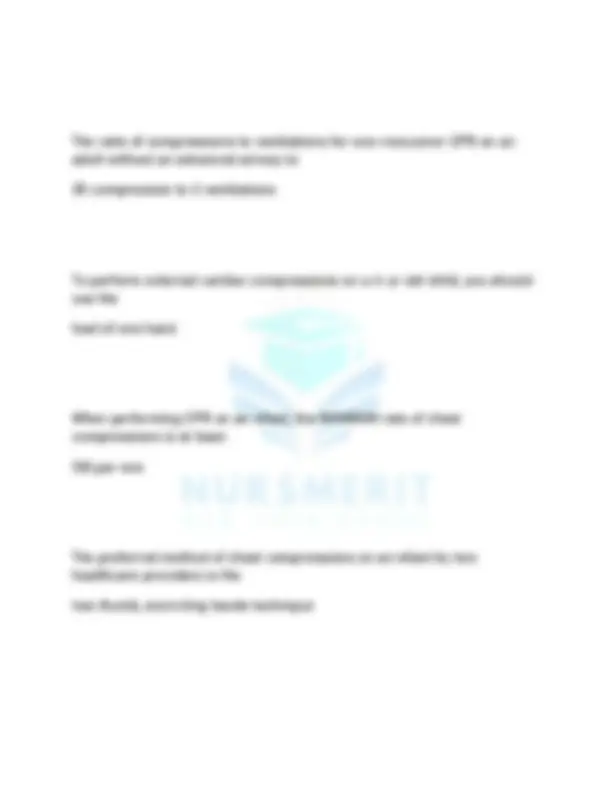
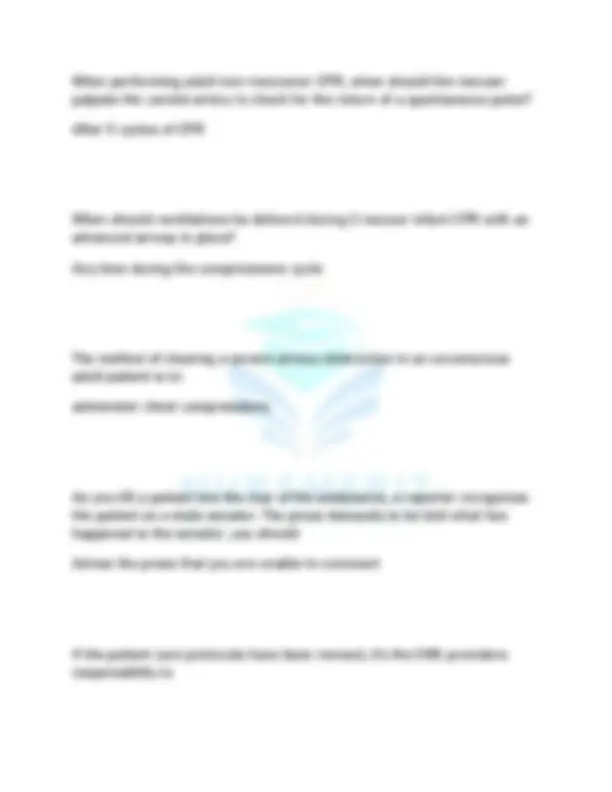

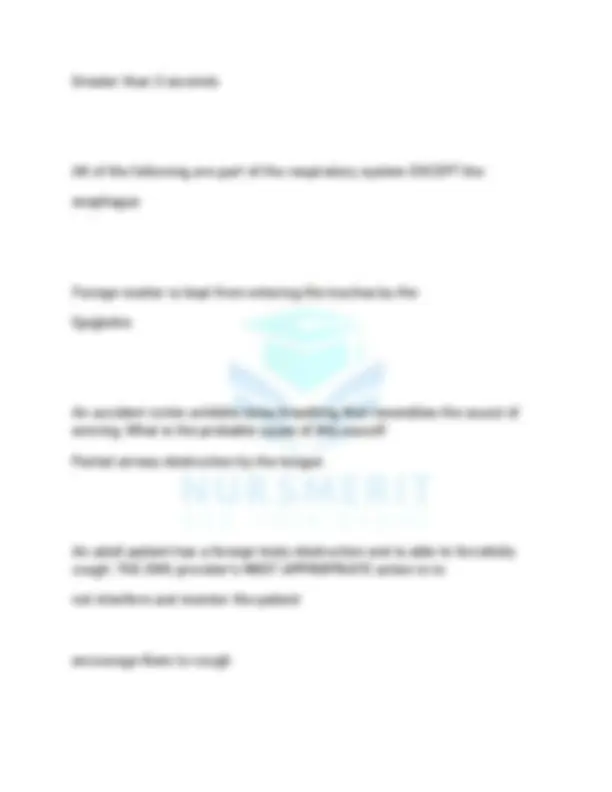
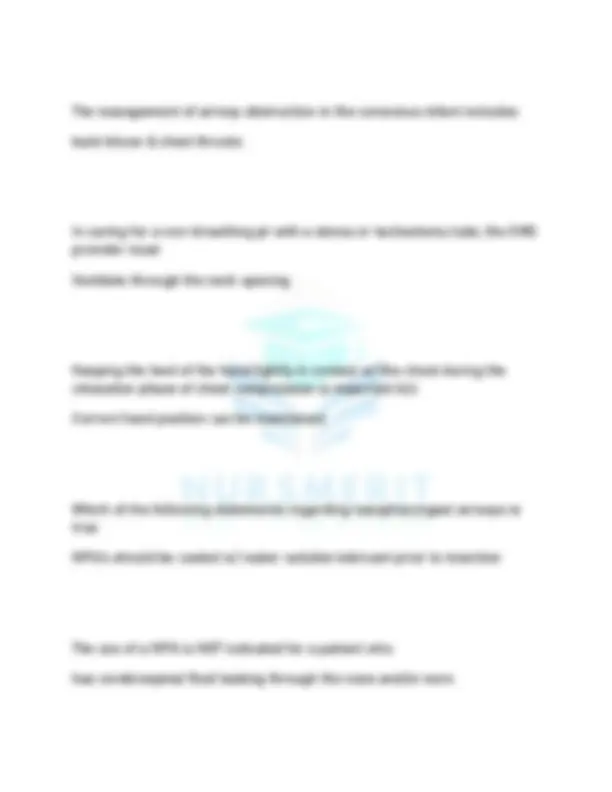

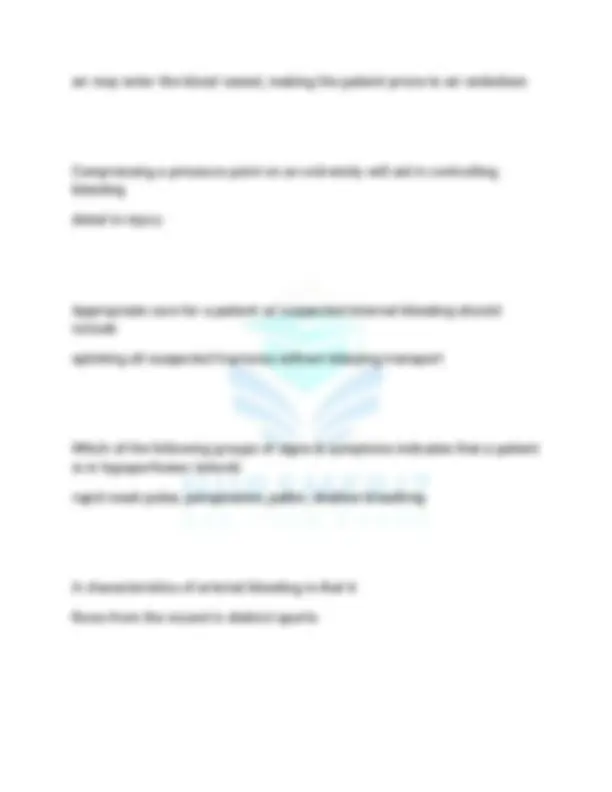
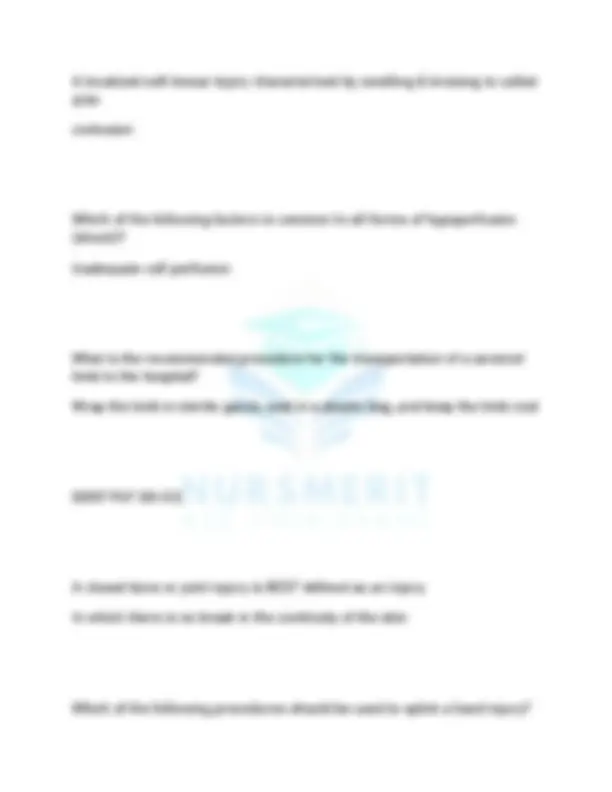
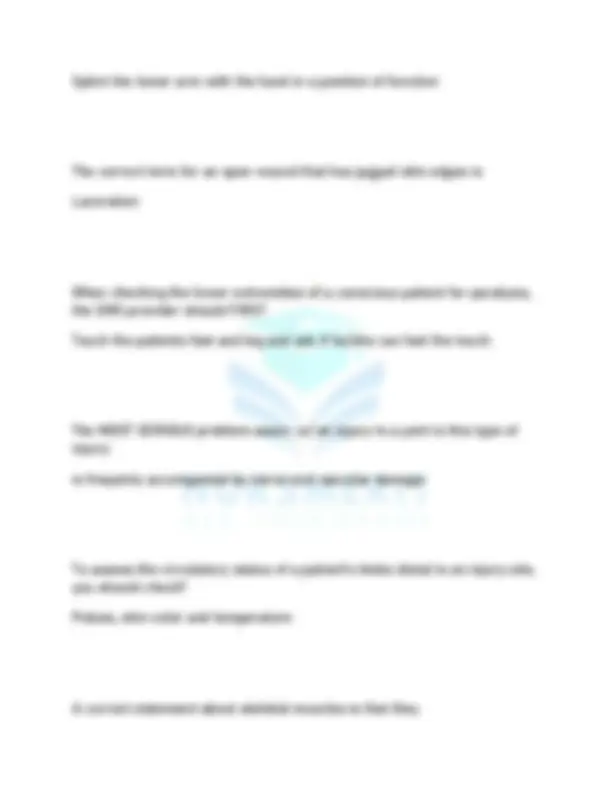
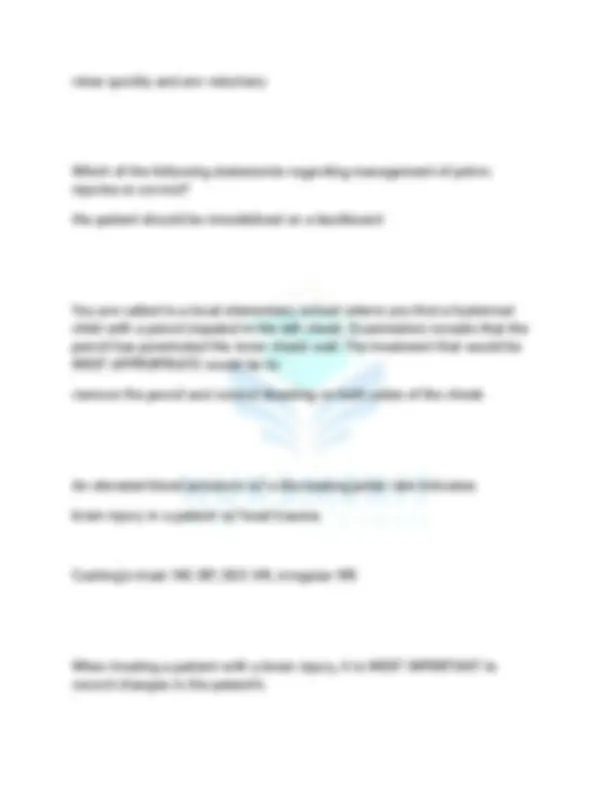
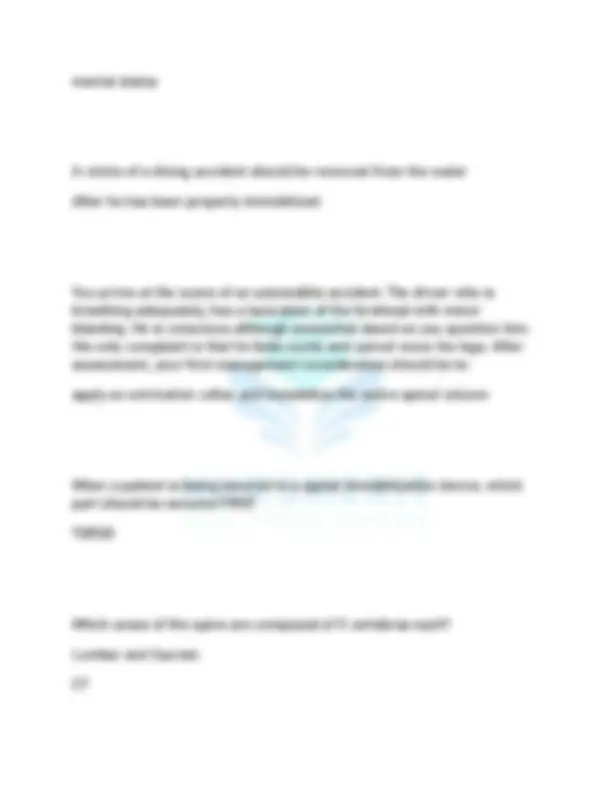


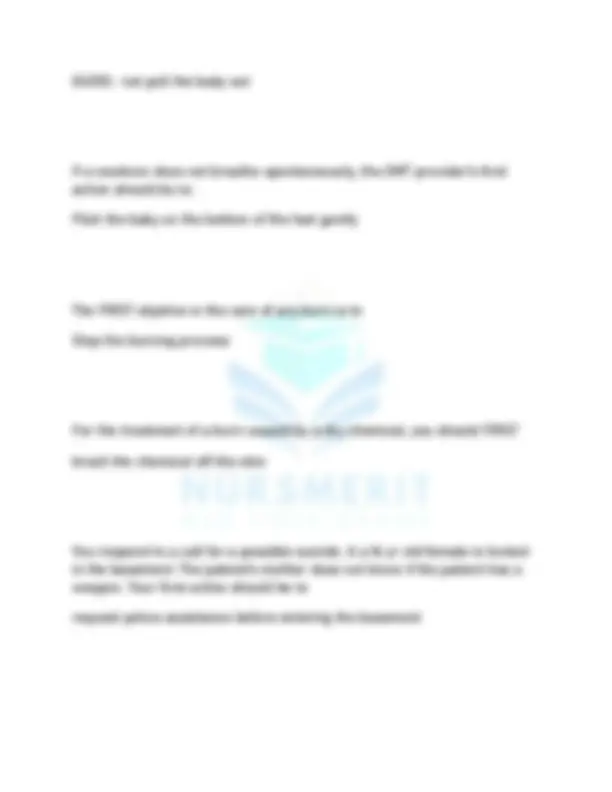

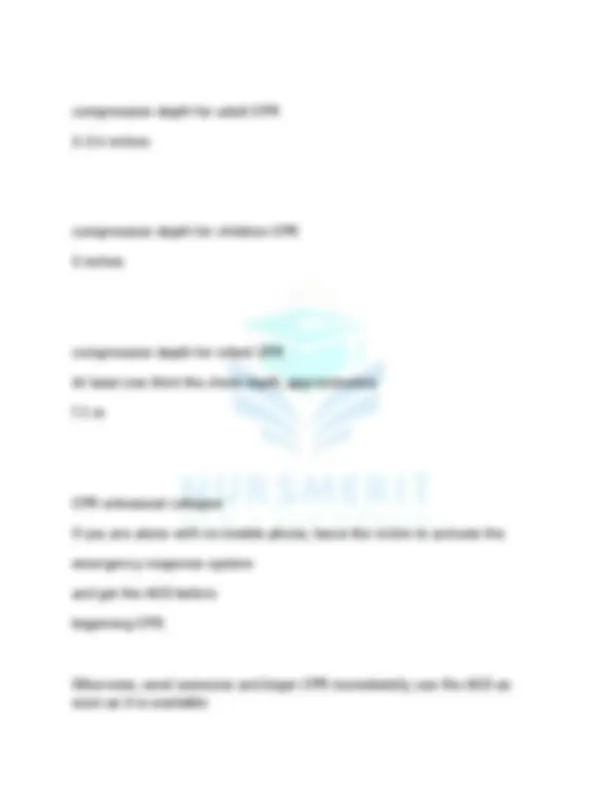
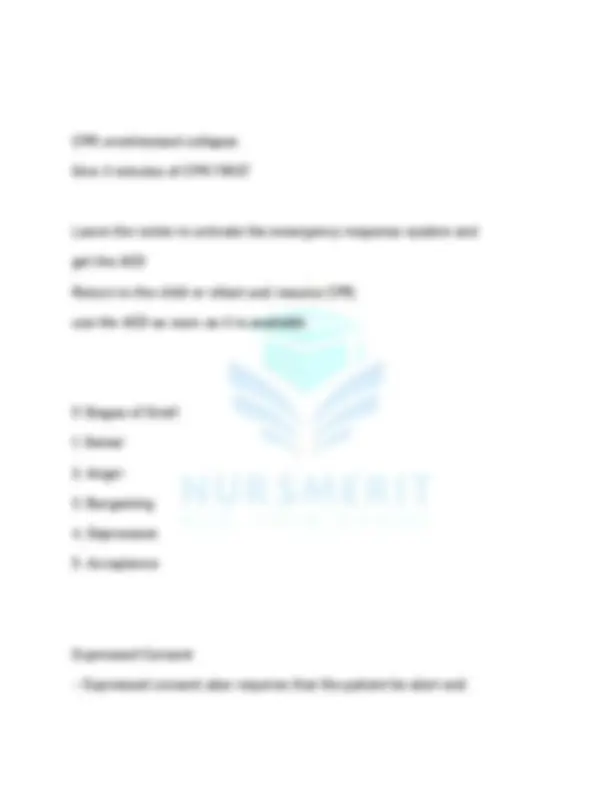
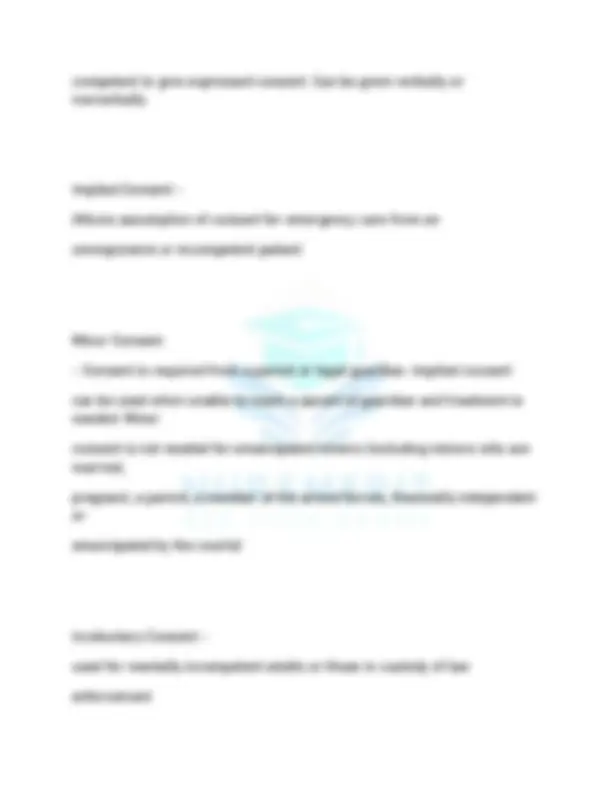
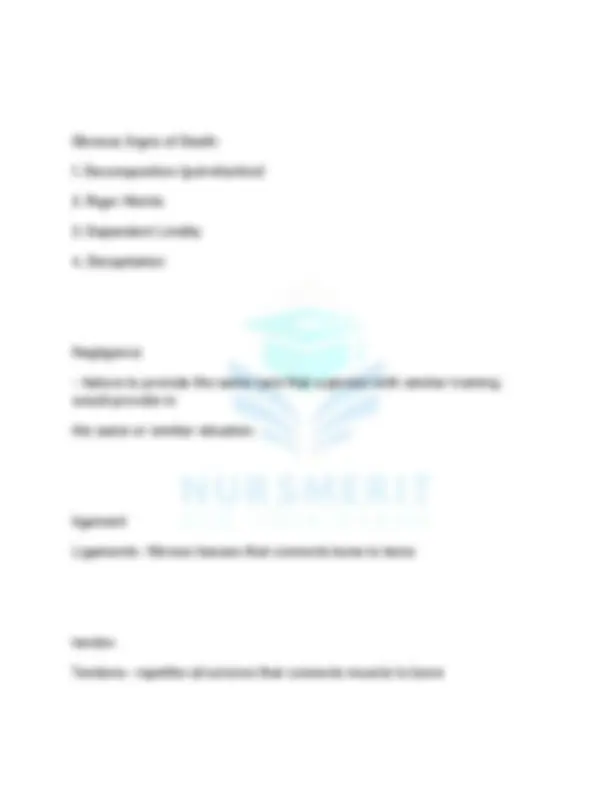

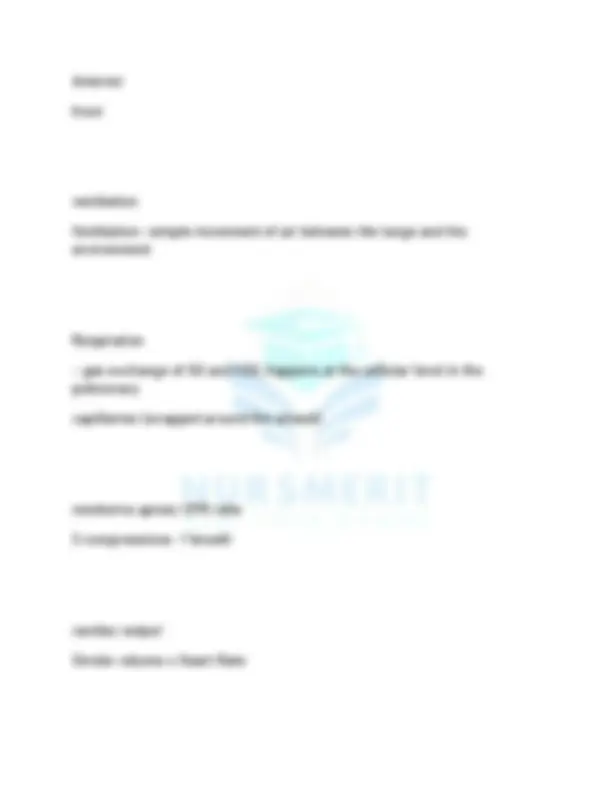


Study with the several resources on Docsity

Earn points by helping other students or get them with a premium plan


Prepare for your exams
Study with the several resources on Docsity

Earn points to download
Earn points by helping other students or get them with a premium plan
Community
Ask the community for help and clear up your study doubts
Discover the best universities in your country according to Docsity users
Free resources
Download our free guides on studying techniques, anxiety management strategies, and thesis advice from Docsity tutors
A comprehensive review for the nys emt-b state examination written test. It includes 300 questions covering various topics related to emergency medical care, including anatomy and physiology, patient assessment, airway management, oxygen therapy, and more. The questions are designed to test the knowledge and skills required for emt-b certification in new york state.
Typology: Exams
1 / 63

This page cannot be seen from the preview
Don't miss anything!
























































When you take the pulse of a patient, you are really a. Counting pressure waves of blood that the heart sends through an artery b. Feeling the swelling of the vein as each wave of blood passes back to the heart c. Noting the heartbeats in the column of blood in a large vein d. Feeling the vibrations of the heart muscles as they push the blood through A. counting the pressure waves of blood that the heart sends through an artery In people whose skin is darkly pigmented, cyanosis is BEST seen by observing a. Mucosal membranes b. Earlobes c. Scalp d. Face
A. mucosal membranes You are treating an alert 35-year old trauma patient. You palpate a strong radial pulse of 100. Your partner has taken the patient's blood pressure and advised you that it is 68/32. You should: a. Suspect the accuracy of the pressure reading and reevaluate it b. Accept the reading as accurate c. Ask you partner to retake BP reading again in 15 min d. Treat patient for hypertension immediately A. suspect the accuracy of the pressure reading and reevaluate it yourself A correct statement about diastolic blood pressure is that it is the pressure a. Exists when heart left ventricle is refilling b. Due to the contraction of the ventricles of the heart c. Caused by contraction of the atria of heart d. Caused by relaxation of the walls of the major arteries d. Caused by relaxation of the walls of the major arteries All of the following are symptoms EXCEPT?
Which of the following is the best indicator of the quality of ventilations A. chest expansion B. pupil size C. blood pressure D. skin color A. CHEST EXPANSION What is the best measure of respiration? skin color ventilation vs respiration ventilation- the simple movement of air into and out of the lungs respiration- the exchange of gases between the lungs, the blood, and the tissues of the body Unless additional suctioning time is necessary to clear the airway, an adult patient should be suctioned for NO LONGER THAN A. 5 sec
B. 10 sec C. 15 sec D. 20 sec 15 seconds During single-rescuer CPR, which of the following ventilation devices would be MOST effective for ventilating a patient A. NRB B. Pocket mask w/ oxygen C. Flow-restricted, oxygen-powered ventilation device (FROPVD) D. BVM w/o oxygen B. Pocket mask with Oxygen because you can maintain a better seal While performing ventilations on an infant or child in respiratory arrest, you should ventilate every A. 5-6 seconds B. 3-5 seconds C. 1-2 seconds B. 3-5 seconds
An EMS provider is treating a patient who has a head injury resulting from a blow by a baseball bat. What other problem are likely to be present? A. Hypothermia B. Hypertensive shock due to blood loss C. Spinal injuries D. Lung collapse C. Spinal injuries biggest risk for someone with a massive injury is? Airway problem In a HEALTHY person, respiration is controlled by level A. carbon dioxide B. blood sugar C. oxygen D. carbon monoxide A. carbon dioxide
In patients with COPD respiration is controlled by? Low O2 levels called hypoxic breathing In conducting the Primary Assessment of a conscious patient, the EMS provider must attend to the patient's emergency needs in the order of: A. Respiration, Pulse, Bleeding B. Pulse, Bleeding, Respiration C. Pulse, Respiration, Bleeding A. Respiration, Pulse, Bleeding A patient with acute respiratory distress requiring oxygen therapy is LEAST likely to exhibit: A. a slow pulse rate B. anxiety C. nasal flaring D. intercostal muscle retractions A. slow pulse rate
Verbal request from family A. Written non-hospital B. DNR or MOLST form C. Written healthcare proxy D. Written living will Written out-of-hospital DNR OR MOLST FORM Implied Consent exists when a patient is suffering from a life-threatening injury or illness and is: a. Under police custody b. A threat to himself and others c. Under age of 18 d. Unconscious D. unconscious The opposite of distal is a. Superior b. Medial c. Lateral d. Proximal
D. Proximal The chamber of the heart that is most muscular and that pumps the most blood into the aorta is the a. Right atrium b. Left ventricle c. Right ventricle d. Left atrium B. LEFT VENTRICLE In correct sequence (VERTEBRAE SECTIONS) and number in each section cervical (7), thoracic (5), lumbar (12), sacral (5), and coccygeal (4) The purpose of the first set of vital signs is to: A. establish a baseline for additional evaluations
A 65-yr old male was involve in a two motor vehicle crash. Upon examination, he complains of chest pain when breathing and tenderness of the sternum. Your INITIAL care should include: A stabilizing the sternum B positioning the patient on his side C administering high-concentration oxygen D administering the patient's prescribed nitroglycerin C Administering high-conc oxygen When spinal injuries are suspected, the EMS provider should FIRST A hyperextend the neck to secure the airway B determine the extent of the paralysis C apply an extrication collar D apply manual stabilization and secure the airway D apply manual stabilization and secure the airway
For a trauma victim w/ a respiratory rate of 40/min, shallow and irregular, who is pale and has a history of emphysema, the MOST APPROPRIATE treatment would be to: a. use of a bvm w/ supp oxygen b. administer low-conc oxygen b/c of emphysema history c. administer supp oxygen w/ a high-conc mask d. transport the patient sitting up to ease the patient's dyspnea A. Use of a BVM w/ supp. oxygen If the EMS provider is unable to find a patient's peripheral pulse during a Primary Assessment, next step should be to: a. turn on the AED b. palpate the carotid pulse c. open the airway and insert an OPA d. check breathing and begin CPR b. palpate the carotid pulse While assessing the MOI of a motor vehicle crash, an EMS provider finds that the airbag has been deployed: The EMS provider should: a. decontaminate the patient b. remove the airbag
Treating for a complete stoma vs incomplete stoma COMPLETE: stoma down to lungs, DONT SEAL NOSE OR MOUTH INCOMPLETE: seal mouth and nose When a patient is stable, EMS provider should repeat the ongoing assessment every 15 minutes In performing an ongoing assessment on a 10-yr old pedestrian struck by a MV, the EMS provider's first step is to, a) recheck vital signs b) repeat the primary assessment c) check the interventions d) repeat a rapid assessment b) repeat the primary assessment
The pre-hospital care report PCR is considered to be a) part of patient's hospital chart b) matter of public record c) inadmissible in a court of law d) research document only A) part of patient's hospital chart Before assisting patient's in taking their own nitroglycerin, and EMS provider must check the: a. Expiration date b. Physicians name c. Color of tablet d. Prescription date A. expiration date 40 - yr old female has difficulty breathing. You determine she has an open airway nad an altered mental status. Her respirations are 8 and shallow. The MOST important step for the EMS provider to take is to a) ask family members of the patients if there's a history of COPD b) assist patient's respiratory efforts w/ high conc oxygen using a BVM c) watch patient carefully and obtain vital signs
A building contractor, under tremendous pressure to meet a job deadline, experiences diffuse pain in his chest. The pain lasts for several minutes, then disappears w/ rest. The EMS provider should suspect a- angina pectoris b- muscular cramps c- pulmonary edema d- congestive heart failure A. angina pectoris What acute disorder of the Cardiovascular system is caused by sudden blockage of coronary arteries a. Angina pectoris b. Myocardial infarction c. Stroke B. Myocardial infarction Angina vs Heart attack angina: spastic constriction of the arteries Heart attack: sudden blockage of arteries
You are treating a patient who is complaining of chest pain and difficulty breathing. You should have the patient lie: a) flat and take slow deep breaths b) in whatever position feels most comfortable c) on his/her back w/ head elevated and take fast shallow breaths d) in a coma position b) in whatever position feels most comfortable